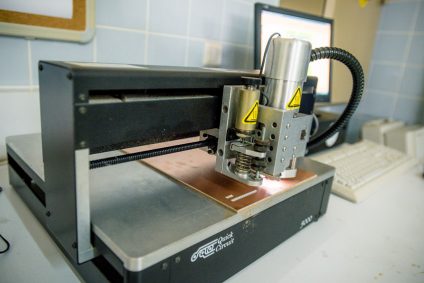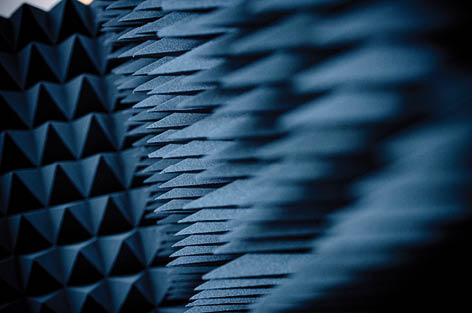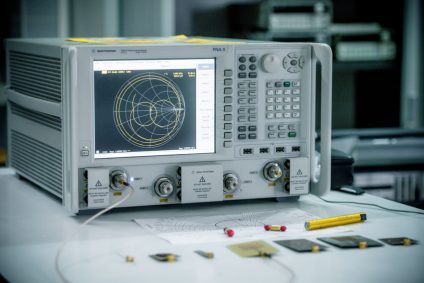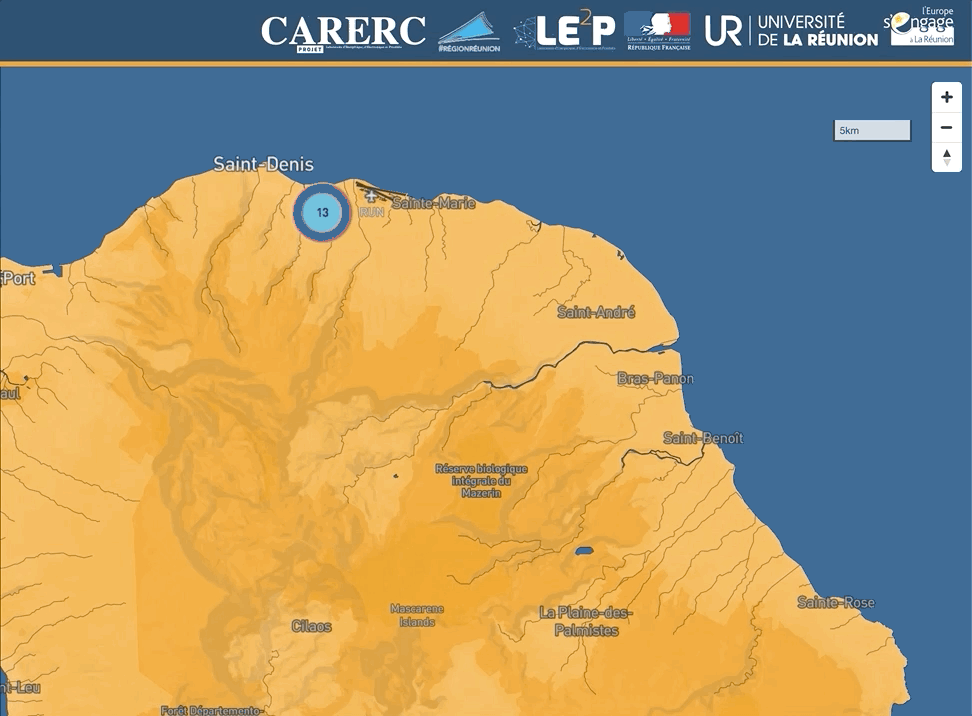Carerc-2
 Over the last two decades we have witnessed a constant development of wireless communication technologies.
Over the last two decades we have witnessed a constant development of wireless communication technologies.
Mobile telephony networks, Internet access points, point-to-point communications are all sources of wireless networks based on communication standards defined by different organizations (ETSI, CEPT, IEEE, FCC). Each of these standards is allocated a frequency band associated with several channels each having a maximum amount of energy.
In order to obtain a frequency and temporal image of these wireless networks, the CARERC project proposes a software and hardware infrastructure creation for measurement, in order to carry out a dynamic 3D electromagnetic mapping of a given space based on the exploitation of sensor networks.
In order to be able to operate in any type of environment, this network must be autonomous in energy. This autonomy passes by softwares (optimization of communications and the activity of network elements) and hardwares (energy harvesting from different sources : electromagnetic waves, solar…).
CARERC project has three objectives, divided into three actions:
- Energy autonomy of the grid
- Realization of an electromagnetic sensor of power levels
- Storage and visualization of measured data on a 3D visualization tool.
Action 1 : Network Energy Autonomy.
A sensor network consists /is composed of a set of elements called”nodes”.
These nodes are composed of :
- Wireless communication interfaces to communicate either between them or with the base station, which retrieves the information transmitted by the nodes to the database
- Sensors, that can be of different natures (temperature, movement, light, wind, etc…). These sensors will provide the information that will be fed back into the database.
Enable the network to be autonomous
For this, the CARERC team is working on :
- Network software optimization : various methods relating to the transmission of information in the network are the subject of doctoral work at the LE²P laboratory , in order to optimize the energy consumed by a node through time.
- Low power protocols are used by the nodes in order to minimize the energy consumption; then some additionnal wake-up mechanism can be implemented using external signals .
Energy recovery for on-board batteries
Energy recovery solutions will be installed on the nodes to recharge the on-board batteries. In addition to the solar resource, the team is working, as part of LE²P’s research activities, on a particular source : wireless energy transmission.
The principle is to recover energy from the electromagnetic waves around the laboratory, transform it into direct voltage and store it in a battery. To do this, the CARERC team use rectifier antennas called “rectena” as well as charge pump circuits to accumulate the low voltage levels recovered.
Action 2 : Electromagnetic power level sensor implementation
In order to perform electromagnetic mapping, an electromagnetic power measurement tool in a given space will be implemented. For this, several solutions have been studied, developed and under development.
The first one consists in measuring the RSSI level (Received Signal Strength Indication) at each sensor network’s node. This measurement is made through the antenna used by the node for its communications and provides information on the power level of the electromagnetic waves received by the node in its communication band.
The second is the use of commercial integrated circuits such as logarithmic sensors (coupled with low noise amplifiers and possibly a mixer) that produce a proportional voltage to the input power level. After calibration of these circuits it is possible, from the measured voltage level, to return to the electromagnetic power level.
An integrated circuit embodying these various functions is to be realized in an leading-edge technology. That will allow to free itself from losses due to the adaptations of the various circuits used in the previous solution.
Action 3 : 3d storage and visualization of measured data
All the measured data will then be stored in a Big data tool. This database will be able to adapt to the different types of data that will be uploaded via the network.
Once this data stored correctly, the CARERC team will be able to visualize it, first of all in order to monitorate the quality of measurement and the proper functioning of the network ; Then to visualize the electromagnetic power level measured in the sensor network deployment space.
It is intended for this visualization to use 3D web tools.
WiFi signal in anechoic space measurement
First objective : Measure the received power on the sensor developed by CARERC of a signal from a WiFi router as a function of the distance and transmission power of the router. Second objective : In a second step, measure what the rectenna collects as energy in the same condition. The aim is to be able to quantify the energy available at the output of the rectenna when using a “non-dedicated” diffuse source.
Brazing of components
This technique allows the components to be positioned by capillary action between the solder and the soldering notches. In addition, it also allows for repairs or modifications to be made to a printed circuit board.
Integration of an environmental sensor
Integration of high-precision environmental sensors for measuring temperature, relative humidity, atmospheric pressure and VOC (volatile organic compounds) gases.
The objective is to collect different physical quantities using the wireless sensor network.
LORA network test
Tests carried out in urban areas with the LORA network
LORA network test at Mafate-1
The first Lora node placed at the top of the ” Roche Vert Bouteille” site
Mapping of the measured power of electromagnetic waves
Sensor network(*) Data Visualization for the CARERC project
(*) Set up within LE2P Lab
LORA network test in Mafate-2
Long-distance communication test of the Lora network in the Mafate circus.
The red point is the GATEWAY (information receiver), the white points, the nodes (transmitters).
From Grand Bénard (1st Gateway) to Dos d’Ane, the range is 15 km (minimum).
Communications
- Rochefeuille E., Alicalapa F., Douyère A., Vuong T. (2017). Rectenna Design for RF Energy Harvesting using CMOS 350nm and FDSOI 28nm, IEEE Radio and Antenna Days of the Indian Ocean (RADIO), 25-28 septembre 2017, Le Cap (Afrique du Sud). 2017 IEEE Radio and Antenna Days of the Indian Ocean (RADIO),. doi: https://doi.org/10.23919/RADIO.2017.8242246. Réf. HAL: hal-01696046
- Douyère A., Rivière J., Rochefeuille E., Dubard J.-L., Lan Sun Luk J.-D. (2017). Etude du couplage et analyse des performances d’une rectenna PIFA à faibles niveaux de puissance, Assemblée Générale GDR Ondes, 23-25 octobre 2017, Sophia Antipolis (France).. Réf. HAL: hal-01630705
- Rochefeuille E., Alicalapa F., Douyère A., Vuong T. (2017) FDSOI 28nm performances study for RF energy scavenging , IEEE Radio and Antenna Days of the Indian Ocean (IEEE RADIO 2017), Sep 2017, Cape Town, South Africa. IOP, IOP Conference S
eries: Materials Science and Engineering, pp.012009, 2018, DOI : https://doi.org/10.1088/1757-899X/321/1/012009〉
Media
The CARERC project is featured in :
- The weekly magazine “Regard’Ensemble”, which covers the island’s economic activities: from 2’35 of the video : http://www.antennereunion.fr/info-et-magazines/regard-ensemble/replay/replay-regard-ensemble-vendredi-07-juin-2019
- News Report on the TV news FranceTvinfo La 1ère : https://la1ere.francetvinfo.fr/reunion/emissions/journal-de-12h30 from 3’30
- Zinfo974 website : https://www.zinfos974.com/%E2%96%B6%EF%B8%8F-Wifi-4G-Bluetooth-Des-scientifiques-de-l-universite-parviennent-a-cartographier-des-ondes-electromagnetiques_a142400.html
Events
- CARERC special participation in the Sustainable Energy Forum organized by IOC, 04/ 9-11/2019
- Participation in the GdR RSD (CNRS); LPWAN thematic days, Lyon, 07/11-12/2019 and Scientific Poster presentation
Posters

Project Manager : Pierre-Olivier pierre Lucas de Peslouan
- Ariste Boutchama, Project Engineer circuits and systems
- Marie-Laure Pérony-Charton, Valorization Project Engineer
- Jérôme Rivière, Project Engineer High Frequency Sensor
- Pierre-Olivier pierre Lucas de Peslouan, Research Engineer Circuit Design and Development
Scientific Director : Alexandre DOUYERE (alexandre.douyere@univ-reunion.fr
Project Manager : Pierre-Olivier Lucas de Peslouan (pierre-olivier.lucas-de-peslouan@univ-reunion.fr)
carerc-le2p




















